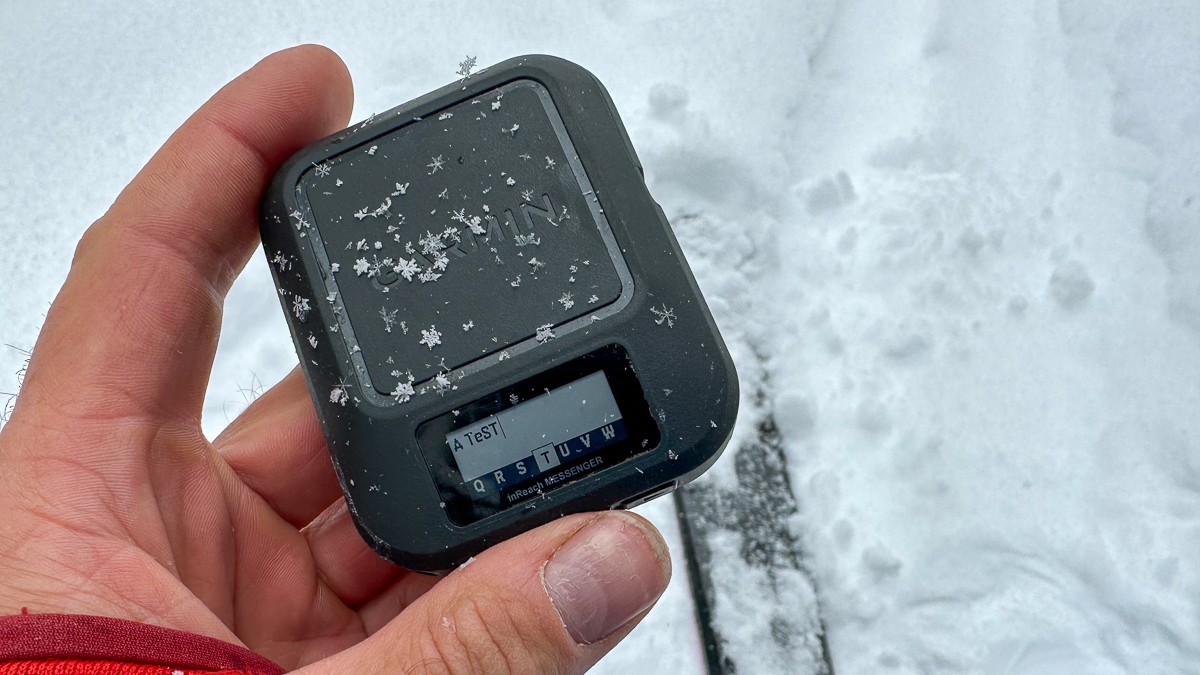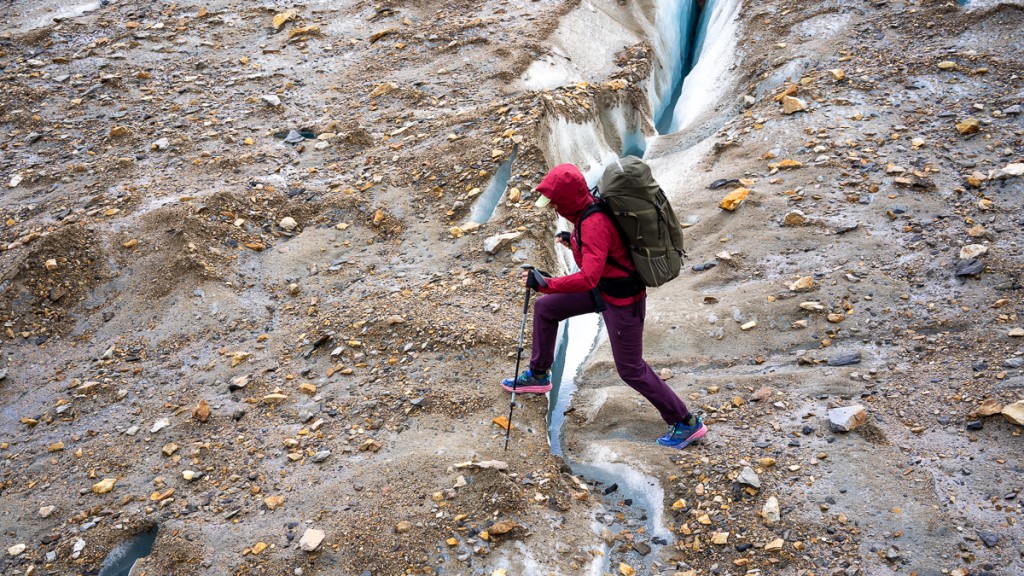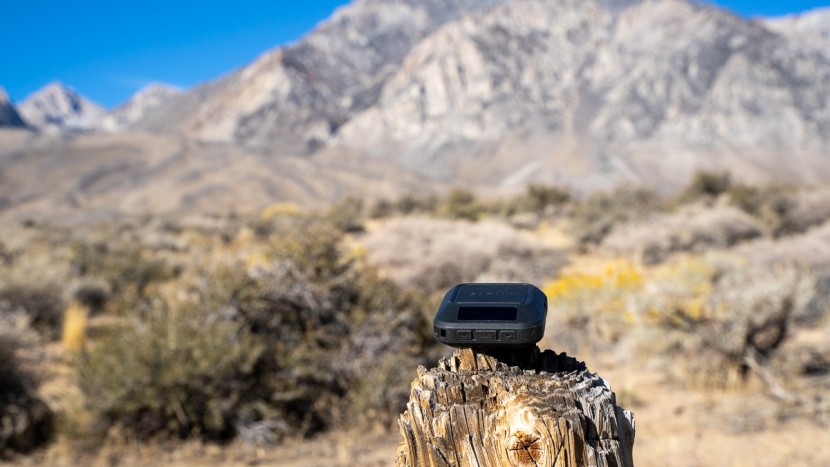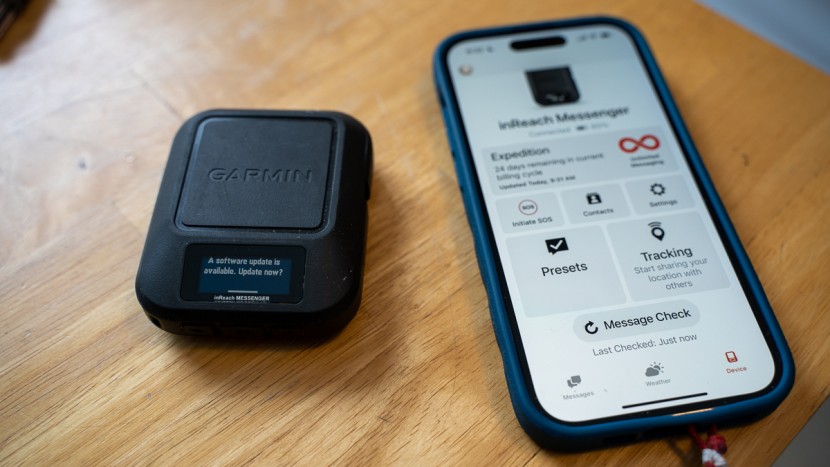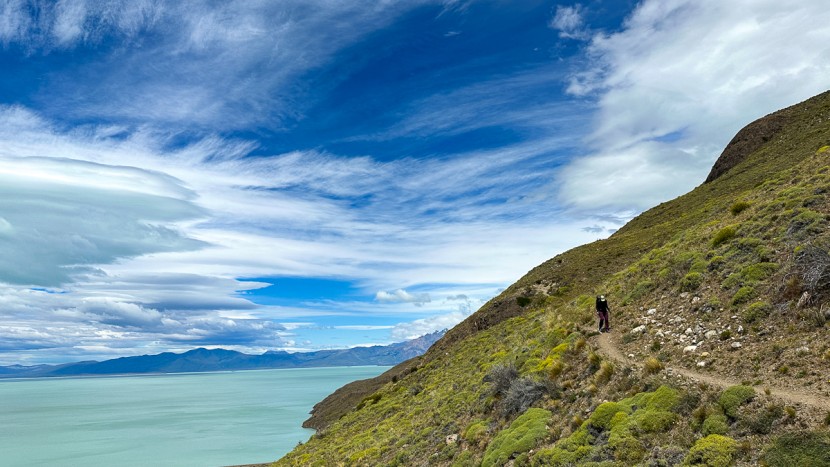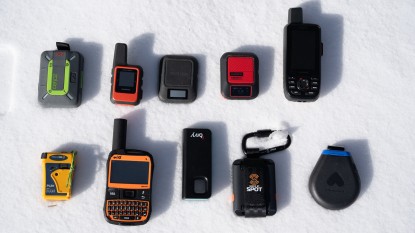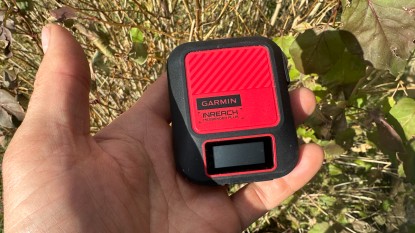Garmin inReach Messenger Review
Our Verdict
Compare to Similar Products
 This Product
Garmin inReach Messenger | |||||
|---|---|---|---|---|---|
| Awards | Best Value for Messaging | Occasional Activation Bang for the Buck | Great Value for SOS Only | ||
| Price | $278.30 at Amazon Compare at 4 sellers | $199.95 at REI Compare at 2 sellers | $199.00 at Amazon Compare at 2 sellers | $44.99 at Amazon Compare at 2 sellers | $370 List $369.95 at Amazon |
Overall Score  |
|||||
| Star Rating | |||||
| Bottom Line | There are devices that have more features but those features are unnecessary and come at the cost of more useful function | A compact, full service satellite messenger that has all you need, and is close to all you would want | This is a smooth, comprehensive two-way communicator that relies on a proven satellite network and brings innovations that raise the bar | This is a tiny device from a new player in this market, using an inexpensive satellite network with great potential. The catch is that we don't know much about this satellite network, and the SOS button on the device is fully exposed to potential inadvertent triggering | A small, satellite-linked emergency communicator that is exactly what you need and nothing more |
| Rating Categories | Garmin inReach Mess... | ACR Bivy Stick | ZOLEO Satellite Com... | Motorola Defy Satel... | Ocean Signal rescue... |
| SOS/Emergency Messaging (30%) | |||||
| Non-Emergency Messaging (25%) | |||||
| Signal Coverage (20%) | |||||
| Ease of Use (15%) | |||||
| Portability (10%) | |||||
| Specifications | Garmin inReach Mess... | ACR Bivy Stick | ZOLEO Satellite Com... | Motorola Defy Satel... | Ocean Signal rescue... |
| 2-way Messaging? | Yes | Yes | Yes | Yes | No |
| 2-way Messaging Available via Cellular/Wifi? | Yes | No | Yes | Yes | No |
| Custom Messaging Viewable and Composable on Device? | Yes | No | No | No | No |
| Passive Tracking (turn on and forget about it - viewers at home can watch your progress on the web) | Yes | Yes | No | Yes | No |
| Weight w/ Batteries | 4.0 oz | 3.6 oz | 5.3 oz | 2.4 oz | 4.0 oz |
| Battery Life | Up to 28 days with a message or location sent every 10 minutes with full sky view | Up to 120 hours | 200+ hours when checking messages every 12 minutes | Up to 96 hours | 24 hours |
| Waterproof Rating | IPX7 (No dust rating. Rain, splashing, and accidental submersion up to 30 minutes) | IP67 (protection from harmful dust. Rain, splashing, and accidental submersion up to 30 minutes) | IP68 (protection from harmful dust. Rain, splashing, and accidental submersion at least 30 minutes) | IP68 (protection from harmful dust. Rain, splashing, and accidental submersion at least 30 minutes) | No Formal Rating. Likely exceeds rating system. Claimed "Up to 15 meters" |
| Pairs with Smartphone? | Yes | Yes | Yes | Yes | No |
| Requires recipient to use a special app for two-way communications? | No | Yes | Yes | Yes | N/A |
| On Device Functions (if you lose or disable your smartphone) | All, but very slow to text | SOS, check-in, tracking. All texting requires smartphone. | SOS, check-in. All texting requires smartphone | SOS, check-in. All texting requires smartphone. | All. |
| Satellite Network | Iridium | Iridium | Iridium | Skylo | COSPAS/SARSAT |
| Dispatch service | Garmin Response Team | Global Rescue | GEOS | Focus Point International | COSPAS/SARSAT |
| Dimensions | 3.1" x 2.5" x 0.9" | 1.9" x .9" x 4.5" | 3.5" x 2.6" x 1.0" | 3.3" x 2.4" x 0.4" | 3.0" x 2.0" x 1.3" |
| Volume | 6.9 CU IN | 7.7 CU IN | 9.1 CU IN | 3.2 CU IN | 6.8 CU IN |
Our Analysis and Test Results
SOS/Emergency Messaging
The Garmin Messenger features emergency messaging that is the “industry standard.” It works like this: you activate the SOS mode when something dire happens to you somewhere without a cell signal. This can be done through the app on your phone or with a button on the device itself. That SOS message, digitally and automatically packaged with identification and location information, goes to the 24-hour staff at “Garmin Response Team.” That team has deep and comprehensive informational resources. They cross-reference your location with their database of SAR resources and work to mobilize the closest and most effective local response.
Local response to your emergency will depend on many factors, and virtually all of them are out of Garmin's control. Local response will depend on geopolitical matters, SAR team triage, weather, time of day, and other logistical matters. By far, the most “standard” part of emergency response is communication. Thanks to the two-way texting functionality of the inReach Messenger, you can provide further details on your situation and potentially receive updates on the status of the SAR response.
In an emergency, the inReach Messenger works very much like all the options on the market. We can't emphasize enough that the biggest determinant of the outcome of your emergency will depend on local resources and conditions. Using your inReach to activate a response to an injury sustained in a vehicle accident down a dirt road just beyond the signal might yield a response in minutes or hours. The same injury resulting from a mountaineering fall in a storm in trail-less mountains in a developing nation might require days to weeks to yield a response. In both cases, the satellite communication portion would take just minutes.
Non-Emergency Messaging
With the inReach Messenger and associated app, you can send and receive text messages (with seamless threads across satellite, cellular, and WiFi), conduct passive web-linked tracking, and collect basic weather forecasts. This is as much non-emergency messaging as any product on the market will do. The inReach Messenger does it all through an app or, with a greater fiddle factor on the device itself.
Signal Coverage
The Iridium network employed by the inReach Messenger covers the entire world and does so reliably. We've used exactly this same network for decades on other devices, and we have a great deal of confidence in the network.
No satellite communication network is perfect, however. All satellite communications are subject to terrain, buildings, and foliage interference. Satellite communications will be slower and/or impossible in a dense forest and on or near steep terrain. This is inevitable with current technology and infrastructure.
Ease of Use
Garmin is a large, older technology company. They've proceeded along a rocky road of user interfaces and ease. Nimble start-ups have pushed the business forward, forcing Garmin to adjust. This technology is complex, and its use will be inherently tricky. That said, Garmin does a better job of smoothing out their devices' setup and service. Configuring and using the inReach Messenger is easy enough, especially if your expectations are in line.
To get set up and use your inReach Messenger, you must configure and pay attention to subscriptions, signal limitations, battery power, and expectations. Allow yourself (and those you are communicating with) a learning curve; this isn't like the text messaging we are accustomed to.
Portability
The inReach Messenger weighs 4.0 ounces and measures 3.1 x 2.5 x .9 inches. It isn't a ton bigger or heavier than other close competitors.
You get a bigger battery and antenna for the few grams and tiny bit of additional bulk. Also, as compared to the closest competitors, the inReach Messenger is a simpler, smoother shape — a rectangle with no protrusions or dangles.
Some will lament that there isn't an obvious, pre-rigged way to attach the Messenger to the outside of your backpack. We don't lament that. We have tested these devices both inside and outside our packs — as long as it is near the top of your pack, every satellite communicator works well enough inside, and we don't like the vulnerability of a dangling emergency device. If your signal is really poor, you can get the device out for a better view of the sky for a brief message check and/or send. Otherwise, keep safety equipment secured inside your bag. If, after reading this, you still absolutely insist on dangling your satellite messenger, there is a place to string a lanyard.
Should You Buy the Garmin inReach Messenger?
Yes. This is currently one of the best options on the market. That said, there are some other fine options (most using the exact same satellite network, for instance) that are very, very similar.
What Other Satellite Messengers Should You Consider?
You are inevitably going to compare the inReach Messenger to the Garmin inReach Mini 2. If you have no satellite device yet, get the Messenger instead of the Mini 2. If you already have an inReach Mini 2, think of it this way. The Mini 2 and Messenger devices are very, very similar. No need to switch. The Mini 2 is better with navigational matters. The Messenger antenna is bigger. The Messenger also has a bigger battery, and if needed (and with all the caveats), you can use a cord to suck a little of that battery life into a different device.
If you have an older inReach Mini, nothing has been upgraded from the original Mini in either the Mini 2 or the Messenger. Maybe, a year ago, you pondered upgrading your original inReach Mini, looked at the then-brand-new Mini 2, and decided it wasn't worth upgrading. Understandable. Now, with the Messenger App and the greater battery size and function of the Messenger device (and another year of wear and tear on your older device), the draw of upgrading might have reached critical mass.
You should also be comparing this to the Garmin inReach Messenger Plus. The “Plus” offers pretty much the exact same form and function as the unqualified Messenger, plus the ability to send and receive photo and voice messages. The “Plus” has 10% shorter battery life and weighs 3 grams more. Otherwise, the differences are in favor of the Plus, and those advantages are worthwhile. The “Plus” takes our highest award next to this “regular” Messenger.


